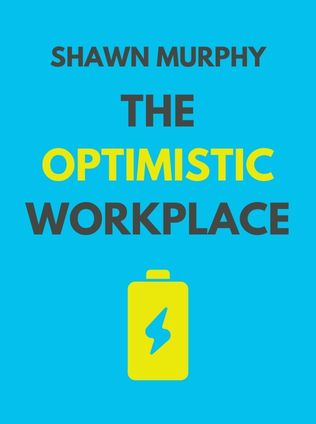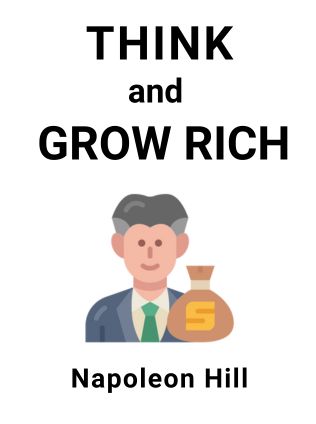
The Optimistic Workplace
Creating an Environment That Energizes Everyone
By Shawn Murphy
Published 10/2015
About the Author
Shawn Murphy is an independent consultant with over 20 years of experience in helping organizations foster workplace optimism. He is the co-founder and CEO of Switch & Shift, a company focused on creating positive work environments. Murphy has been recognized as one of the Top 100 leadership speakers by Inc.com. His book, "The Optimistic Workplace: Creating an Environment That Energizes Everyone," is a testament to his dedication to transforming workspaces into places of inspiration and productivity.
Main Idea
"The Optimistic Workplace" by Shawn Murphy advocates for a shift from the traditional, grindstone approach to work towards creating a positive and motivating work environment. The book emphasizes that a positive workplace climate, which is easier to influence than culture, can lead to higher employee engagement, innovation, and overall organizational success. Murphy introduces the concept of a steward model of management, focusing on people-centric leadership to ignite employee potential and foster a sense of purpose and belonging at work.
Table of Contents
- The Future of the Workplace
- Workplace Optimism
- Origins of Optimism
- Destructive Management
- Gallant Acts
- The Power of Contagious Emotions
- The Downside of Optimism: Missteps and Excess
- Values-Based Leadership
- Getting Employees to Think the Same Way
- It All Starts with Purpose
- Aligning Purposes
- The Meaning Makers
- We Must Change the Way We Work
- Human-Centered Leadership
- Next Comes Trust: Creating Community
- The Cultivation of Optimism
The Future of the Workplace
Culture is deeply rooted in the fabric of an organization, embodying its history and the stories passed down over time. However, the day-to-day experience of working in an organization, known as the workplace climate, is equally important. This climate is the quality of the workplace environment and its influence on employees' behaviors and perceptions. According to psychologists Robert Stringer and George Litwin, the immediate leader has the greatest impact on the climate, influencing up to 70% of it. Leaders shape the mood through their interactions, words, and tone.
Stringer and Litwin explain that a positive climate is built on clear role definitions, high performance expectations, autonomy, trust, and a sense of belonging. These are all elements that leaders can control, making climate a powerful tool for creating lasting change. While culture is difficult to shift and may take years, climate can be influenced more readily, leading to positive outcomes in the workplace.
Workplace Optimism
Workplace optimism is the belief that good things will result from hard work. It transforms the work experience by focusing on the best positive potentials. Essential beliefs for creating a positive work experience include:
- The team is more important than any individual.
- Experiencing joy at work has value.
- Doing good is good for business.
- Relationships with employees need to be richer.
- Work should align with purpose and meaning.
- Leaders need to actualize human potential.
These beliefs are crucial in helping employees view their work as a bright spot in their lives, fostering an optimistic climate that enhances engagement and performance.
Origins of Optimism
Optimistic climates are not based solely on a people-first or profit-first philosophy. Instead, they follow a dynamic exchange among three elements: purpose, meaningful work, and extraordinary people. These elements create a motivating environment where each aspect informs and influences the others.
Purpose guides employees' work and aligns them with organizational aspirations. Meaningful work directs the focus of extraordinary people, and these people, in turn, shape what work needs to be done. Together, these elements form the Origins of Optimism, an interdependent system that fosters a positive and productive workplace.
Destructive Management
Destructive management is a collection of symptoms resulting from ill-fitting practices and misjudged choices. It often occurs when leaders fail to adapt to modern workforce demands. Symptoms of destructive management include:
- Blind Impact: Leaders unaware of how their actions affect others, hindering workplace optimism.
- Antisocial Leadership: Inability to build and nurture a community united by shared purpose.
- Chronic Change Resistance: Preference for the status quo, limiting significant change.
- Profit Myopia: Belief that profit is the sole measure of success.
- Constipated Inspiration: Leaders unable to inspire their team, often due to self-focus.
- Silo Syndrome: Leaders unable to see beyond their immediate responsibilities, failing to understand broader impacts.
These symptoms lead to distress and a negative workplace atmosphere, stifling employee potential and productivity.
Sign up for FREE and get access to 1,400+ books summaries.
You May Also Like
The Subtle Art of Not Giving a F*ck
A Counterintuitive Approach to Living a Good Life
By Mark MansonThe Lean Startup
How Today's Entrepreneurs Use Continuous Innovation to Create Radically Successful Businesses
By Eric RiesWho Moved My Cheese?
An Amazing Way to Deal with Change in Your Work and in Your Life
By Spencer Johnson, M.D.You Are A Badass
How to Stop Doubting Your Greatness and Start Living an Awesome Life
By Jen SinceroDaring Greatly
How the Courage to Be Vulnerable Transforms the Way We Live, Love, Parent, and Lead
By Brené Brown



















